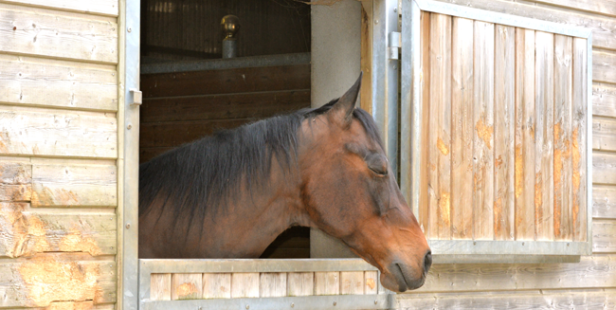Thursday 23rd March, 2017

Horse owners everywhere are welcoming the lighter nights and longer days of Spring, and as we look to the new season it is time to think about switching up your stabling routine. Warmer temperatures and drier days will allow your horse to enjoy greater freedom in the great outdoors while you concentrate on improving his environment, so here are our top tips to transitioning your horse to a new routine this Spring.
If you have had limited grazing or had to stable your horse for much of the winter, increased turn out time is a god-send for both horse and rider as it gives him the chance to let off steam and you the chance to carry out a much-needed spring clean. That said, letting your horse loose on the lush grazing can be problematic in and of itself, as the water-soluble carbohydrates in spring grass are the biggest cause of laminitis. Stabling routine changes need to be carried out gradually, so increase your horses turn out time by an hour each day over a period of 1-2 weeks, and section fields off so that horses cannot gorge on the grass.
As your horse enjoys his new-found freedom, spring is the perfect time to carry out essential stable maintenance. Stables and stalls can sustain considerable damage during the winter months where horses are stabled for long periods of time, and repairs/replacements must be carried out in good tie for your horse’s safety and security. Check the wall panels for cracks or holes incurred through kicks or pawing, and examine doors and window frames for weaknesses or damage due to crib-biting, windsucking and leaning.
After several months of deep litter beds, stables can become considerably damp and smelly, so make the most of the drier days to fully disinfect your stable. As soon as you turn your horse out in the morning, remove all bedding and use a hard-bristled brush to scrub your stable floors and walls with disinfectant then leave to air dry. There are many equine safe disinfectants available from your local retailer, so ensure that you follow the manufacturers dilution rates and rinse your stable thoroughly. Once dry, you can then lay a fresh bed down ready for your horse in the evening.
As you decrease the periods of time your horse is stabled from Spring onwards, the new season provides the ideal opportunity to review your horses bedding requirements. The use of rubber mats is hugely popular in professional yards and equine hospitals, and they are incredibly easy to install and clean. Rubber matting provides a non-slip cushioned flooring for your horse to stand or lay upon, and will insulate them from a cold damp concrete floor. Rubber mats can be used alone or alongside shavings or straw, and their use will reduce the amount of additional bedding you will need all year round, therefore incurring significant long term savings.